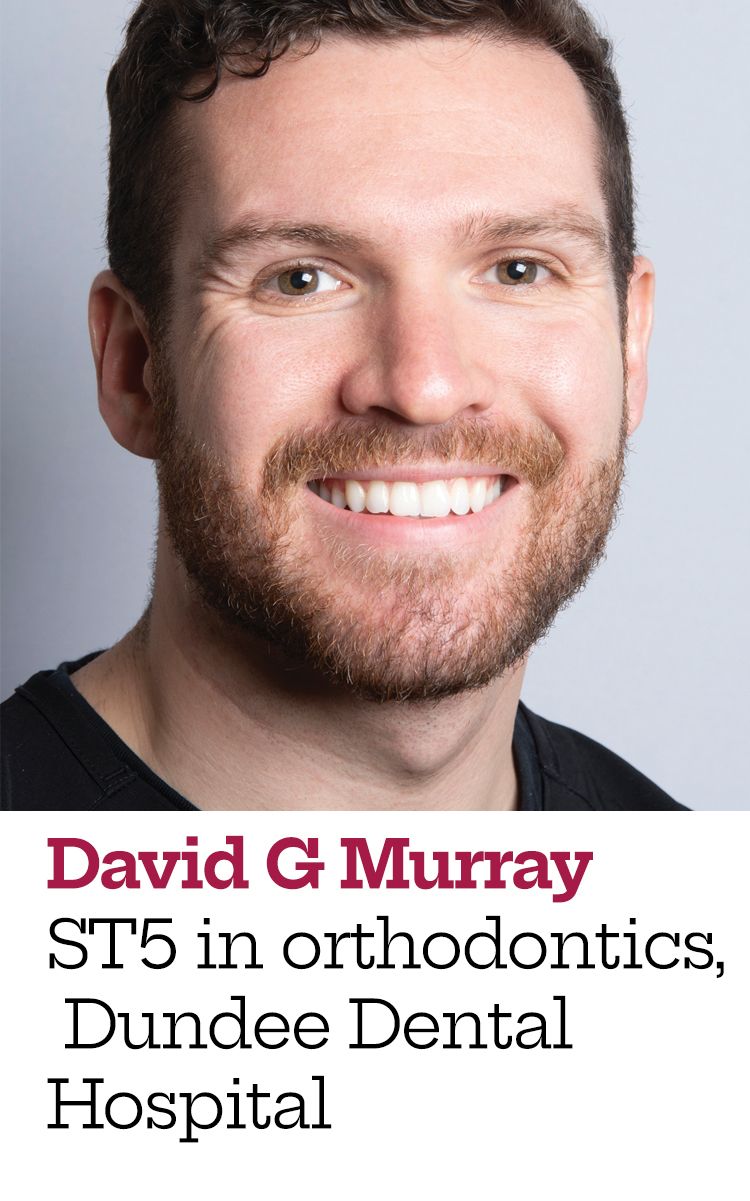Aiming high
is key (COPY) (COPY)
Grant McIntyre explores the new vision for dental specialty exams
IN BRIEF: DENTAL
Restorative dentistry: The latest guidance, articles and studies

Virtual versus conventional planning in orthognathic surgery: a systematic review and meta-analysis
This systematic review and meta-analysis aimed to compare the accuracy of hard-tissue movements planned using conventional surgical planning (CSP) and virtual surgical planning (VSP) techniques versus the outcome actually achieved in a patient undergoing orthognathic surgery. The literature search was conducted across six databases, including a further grey literature search with study selection completed in duplicate by two independent reviewers. The Cochrane Risk of Bias tool was utilised to assess the bias risk of the included studies. 1,078 studies were identified following the deletion of duplicates, with six studies included in the qualitative synthesis (two randomised control trials and four retrospective cohorts) and three studies included in the quantitative synthesis (one randomised control trial and two retrospective cohorts). Variations in the assessment technique between the groups may make the results less reliable because of difficulties in comparing the selected studies. Comparison of 138 subjects (73 CSP compared with 65 VSP) across the three papers included in the meta-analysis showed that VSP was more accurate in achieving the planned outcome for horizontal measurements. This was a statistically significant finding
(p = 0.02).
The authors concluded that it is possible to improve the accuracy in the planning of horizontal movements and the efficacy in the treatment planning of transversal movements by using virtual surgical planning techniques. They did, however, recognise that none of the selected studies were free of bias and the quality of the studies found in the literature should be carefully interpreted. The authors recommend utilising identical methods for evaluating accuracy when comparing VSP with CSP and carrying out randomised clinical trials to obtain more robust clinical evidence.
Strujak G, Marlière DA, Medeiros YD, et al. Virtual versus conventional planning in orthognathic surgery: a systematic review and meta-analysis. J Maxillofac Oral Surg 2024; 23: 219-228.
Enhancing skeletal stability and class III correction through active orthodontist engagement in virtual surgical planning: a voxel 3-dimensional analysis
This secondary analysis of pre-existing data prospectively collected for clinical purposes aimed to evaluate the postsurgical skeletal stability after 12-18 months of follow-up in a severe class III cohort treated with bimaxillary orthognathic surgery after virtual surgical planning (VSP) performed by an orthodontist in close communication with the oral and maxillofacial surgeon. Anonymised CBCT scans of 17 non-growing patients (24.8 ± 3.5 years) were analysed at T1 (one month before surgery) and T2 (12-18 months post-surgery) and then compared with the VSP. 3D image analysis was conducted using 3D Slicer software based on validated deep-learning approaches. The cranial base was used as the reference area of superimposition because it is not altered by orthognathic surgery. To assess the accuracy of mandibular and maxillary movements relative to the cranial base displacements, within 2mm for linear measurements and within 4 degrees for angular measurements were considered clinically acceptable.
A statistically significant difference was observed in the postoperative advancement of the maxilla when compared with the VSP position with a mean difference of 1.8mm between T1-VSP and T1-T2. This means at T2 the A-Point of the Maxilla was 1.8mm retrusive when compared with the planned VSP position. Within the group of six subjects who displayed a maxillary discrepancy exceeding 2mm between T1-VSP and T1-T2, four had planned maxillary advancements that exceeded 5mm. No other statistically significant differences were found.
The study findings demonstrated excellent predictability of jaw positions in the midterm period when orthognathic surgery is planned using VSP. The observed maxillary position at follow-up suggests the maxilla could benefit from a slight overcorrection in the sagittal plane, particularly if the aesthetic goals include an improved support for soft tissues and increased dental exposure on smiling. Finally, this study emphasises the importance of collaborative working between maxillofacial surgeons and orthodontists in the development of the VSP to achieve long-term skeletal stability and improved postoperative outcomes.
Barone S, Cevidanes L, Miranda F, et al. Enhancing skeletal stability and class III correction through active orthodontist engagement in virtual surgical planning: a voxel-based 3-dimensional analysis. Am J Orthod Dentofacial Orthop 2024; 165(3): 321-331.



